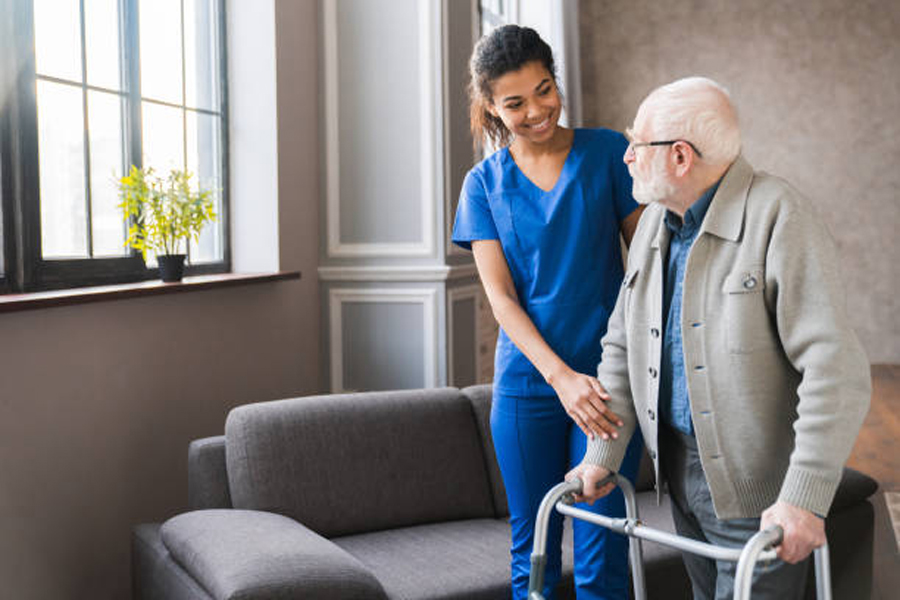
The elderly may be boisterous and full of life, but mobility can become something of an issue as one progresses in age mainly if there have been past injuries or the onset of chronic inflammatory disorders like arthritis and osteoporosis. Mobility equipment can make all the difference and lead to a more hassle-free, comfortable, and ultimately independent life that everyone of a certain age appreciates. Here are some tips to get the best mobility equipment to match the needs of your parent or elderly friend or loved one.
The Factors To Consider For A Mobility Aid
Knowing the right type of mobility equipment for an elderly person depends on a careful understanding and balancing of several factors. Mobility aids are likely to be something an individual will use several times a day if not more so they cannot be ill-suited or uncomfortable.
- Budget- money may not be able to buy happiness, but it can usually buy comfort everyone’s budget varies especially in their retirement years. If you are purchasing a mobility aid (one or more) for someone, have a budget range to work with so that you can fit in models and varieties in that budget range without wasting much time.
- Environmental Cues/ Terrain – where a person lives and the terrain they continuously encounter is very important when choosing a mobility aid. Questions that need to be asked are: does a person live in a hilly, countryside area or where there are smoother roads? Is it a fast-paced life or relatively more serene and slow? The climatic factors such as the presence of snow, rain, or heat also play a part in choosing the right equipment otherwise it might prove to be less of an aid and more of a health hazard.
- The Way One Lives– a great deal depends on the individual’s lifestyle, how much physical activity they prefer, and the nature of those activities. Many people like a full and active life while some prefer quieter, more solitary activities like reading or doing puzzles.
- Health Problems & Overall Weight– the state of an individual’s health is instrumental in choosing the perfect mobility aid to improve their life. Some people have bone and joint inflammation and issues, others might have other health problems that impede movement, and in some cases, mobility equipment like a crane, walker, or scooter needs to work well with other health devices such as a breathing apparatus, etc. The weight of the person which in itself may be a symptom of an underlying condition will also influence the viability of many mobility aids available such as mobility scooters, wheelchairs, or rollators.
Transport Chairs & Wheelchairs
A transport chair is the trendier and easier-to-transport version of a traditional wheelchair. Some size and style variations are available in transport chairs from any mobility equipment supplier, and it is all about evaluating the product in terms of comfort and convenience. Transport chairs come in a few different types of materials particularly aluminum and steel and the former is lighter in weight than the latter.
A transformer wheelchair is similar to a transport chair and in some ways is a combination of transport chairs and standard wheelchairs. Wheelchairs are of course well known and very useful for anyone unable to walk or unable to work safely or someone who has other balance and movement issues perhaps caused by neurological problems. Wheelchairs can be manual, automatic, and lightweight and some may have additional features for bariatric people. More minor details like armrests, back height, backrest material, and so forth vary from model to model.
Rollators
Rollators are a new-age variety of walkers with comfortable handles, additional resting space, and wheels. They vary from regular walkers as they offer more support and do not need to be lifted; in some ways, they can ensure better walking speed for elderly individuals. The included padded seat that comes in most rollators is a beautiful addition for elderly people requiring a bit of rest between walks or when waiting in a queue at the pharmacy for example. Elderly people looking for a more active way to engage in daily life would be well-suited with a rollator.
Knee Scooters For On The Go
Knee scooters are popular mobility aids post-injury. Knee scooters come with a padded seat that can be used, sturdy handles, and two sets of wheels. Shops like Elder Mobility have mobility scooters that are of great help to elders. Elderly individuals that generally can walk around but are recovering from a sprain, a weakness in a single joint, or a related injury can benefit from investing in a knee scooter as it will prevent further strain on those joints.
Crutches
Crutches are also a singularly good option for recovering from injuries in a foot or ankle for example but are rarely great for elderly people as they require a lot of upper body mobility and strength. They are hard to use on uneven ground, and the range for errors such as slipping or tripping is greater when using crutches. They should only be used if the individual is recovering from a specific type of injury but generally is energetic and in good shape.
The Classic Cane & Newer Varieties
The cane has been used for centuries as a mobility aid, and for many people, it is the instrument of choice for them to lead a more mobile and active life. A cane provides support for about half the body and elderly individuals depending on how well their back can manage movement can choose from single tip canes and quad tip canes which is a cane with four tips that offer considerably more support.
Tripod tip canes are also built around the same concept, but the research says that quad-tip varieties fare the best when offering support and balance. Having the right handle is a vital caveat as the cane will be used daily and the handle needs to be firm but comfortable and ergonomic.
Comments
comments